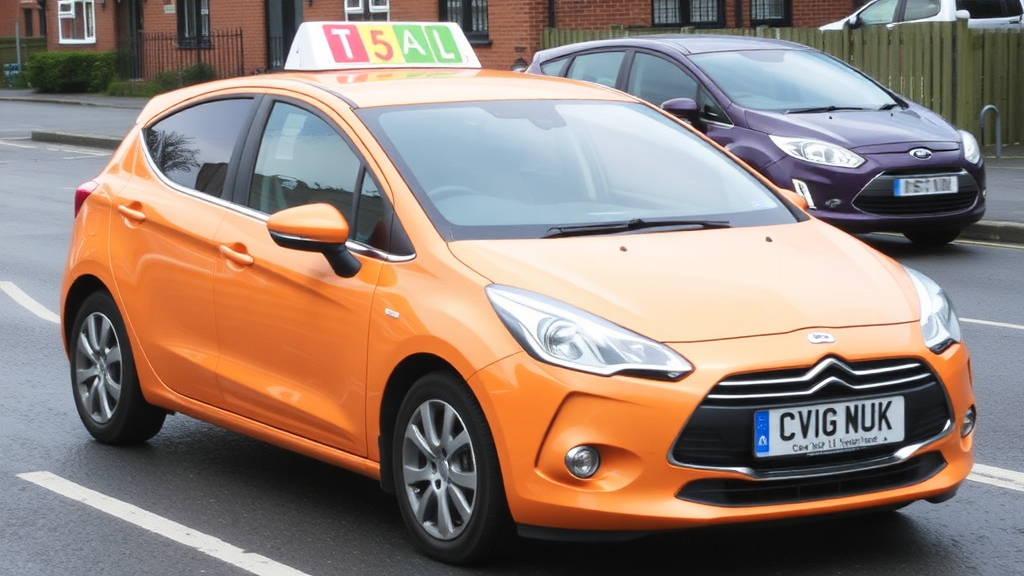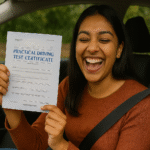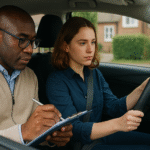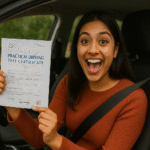Availability of Practical Driving Tests: Current Status and Future Updates
As a prospective driver, understanding when practical driving tests will be available can significantly influence your journey toward getting your driving license. The availability of these tests has become a point of discussion, especially given the recent interruptions due to various global events. This article explores the current status of practical driving tests and offers insights into expected updates.
Current Status of Practical Driving Tests
Many regions are gradually reinstating practical driving tests following disruptions. Based on the latest information available, most local driving test centers are operational; however, the situation can differ widely depending on your location. To understand better, here are some factors impacting the availability of practical driving tests:
- Local Regulations: State or regional guidelines significantly affect the scheduling of tests. Some areas have stricter post-pandemic measures, resulting in longer wait times.
- Testing Centers’ Capacity: The number of available examiners and vehicles can limit the scheduling of tests. Many centers work to increase their capacity by adding additional time slots or examiners.
- Public Demand: A surge in applicants can lead to longer wait times. During peak seasons, such as summer, it’s common to see higher demand.
As of now, many tests are being conducted with a few adjustments to ensure safety. Applicants are encouraged to check their local transport authority’s website for the most recent updates regarding booking and availability.
Booking a Practical Driving Test
Booking a practical driving test is an essential step in your driving journey. Here’s how you can go about it:
- Visit Your Local Transport Authority’s Website: The online portal will provide the latest information regarding test availability.
- Check Slots Regularly: Test slots can fill up quickly, so it’s advisable to check frequently for openings, especially during peak times.
- Utilize All Available Resources: Some regions offer apps or tools to help you see available slots in real-time.
Future Updates and Expectations
Looking ahead, several factors may influence the future updates concerning the availability of practical driving tests. Here are some key points to consider:
- Government Policies: Changes in regulations or policies can lead to either an increase or decrease in available test slots.
- Technological Advances: Innovations, such as online booking systems or even virtual testing scenarios, could reshape how tests are conducted.
- Training Requirements: Future updates may also evolve from changes in training requirements for applicants, potentially impacting how many people are able to take tests.
Tips for Preparing for Your Practical Driving Test
When you secure a slot, preparation is crucial to passing your practical driving test. Here are some useful tips:
- Practice Regularly: Ensure you get plenty of practice driving under various conditions.
- Understand the Test Routes: Familiarize yourself with common routes used during the test.
- Stay Calm and Confident: Anxiety is common, but practicing deep breathing can help ease your nerves.
Frequent Questions About Practical Driving Tests
| Question | Answer |
|---|---|
| How long is the wait for a practical driving test? | Wait times can vary; it may range from a few weeks to several months depending on demand and location. |
| Can I change my driving test appointment? | Yes, but check your local rules for any fees and the timeframe within which you can make changes. |
| Will the test be the same as before the pandemic? | While the fundamental aspects remain unchanged, there may be additional safety protocols in place. |
Staying informed about the availability of practical driving tests is vital for all prospective drivers. Ensure to frequently check your local transport authority’s communications for the latest updates and prepare adequately to enhance your chances of success.
How to Prepare for Your Practical Driving Test
Preparing for your practical driving test can feel daunting, but with the right approach, you can boost your confidence and improve your chances of success. Knowing when tests are available is essential, but equally important is how you prepare yourself for the experience. Here are several strategies to help you get ready for your practical driving test.
Understand the Test Structure
One of the first steps in your preparation is to familiarize yourself with how the practical driving test is structured. The test usually consists of several components:
- Vehicle Safety Check: You will be asked to perform a safety check on the vehicle, including checking lights, brakes, and tires.
- Driving Procedures: This part will evaluate your ability to perform real-life driving tasks, including turning, stopping, and navigating intersections.
- Independent Driving: Expect to drive independently for a portion of the test, following directions from a navigation system or signs.
- Manoeuvres: During the test, you may be required to demonstrate specific manoeuvres like parallel parking or reversing around a corner.
Practice, Practice, Practice
There’s no substitute for practice when it comes to mastering driving skills. Here are some ways to ensure you’re adequately prepared:
- Schedule regular practice sessions: Aim for at least two to three sessions per week leading up to your test.
- Practice in various conditions: Try to drive in different weather conditions and at different times of day to gain diverse experiences.
- Use mock tests: Have an experienced driver give you a mock test to gauge your readiness.
Take a Driving Course
If you haven’t already, consider enrolling in a driving course. Professional instructors can provide valuable insights and tips that can significantly enhance your driving skills. A structured driving course often includes:
- Personalized feedback on your driving performance.
- Guidance on how to handle difficult situations on the road.
- Additional resources like study guides or practice tests.
Know the Rules and Regulations
It’s crucial to understand the driving laws and regulations in your area. Being aware of these rules not only prepares you for your test but also makes you a safer driver. Make sure to study:
- Traffic signs and their meanings.
- Speed limits and how to adjust your speed appropriately.
- Right-of-way rules and when to yield.
Prepare Mentally
Getting into the right mindset is just as important as the technical skills you need. Here are some mental preparation tips:
- Stay Calm: On the day of your test, practice deep breathing exercises to help reduce anxiety.
- Visualize Success: Picture yourself passing the test. Visualization can improve confidence.
- Stay Positive: Focus on your strengths rather than your weaknesses.
Check Your Vehicle Before the Test
On the day of your practical driving test, ensure that the vehicle you will be using is in good condition. Double-check the following:
| Vehicle Component | Check |
|---|---|
| Lights | Ensure all indicator lights, headlights, and brake lights are functioning. |
| Brakes | Test the brakes to ensure they are responsive. |
| Tyres | Check for proper inflation and tread depth. |
| Windscreen Wipers | Make sure wipers are clean and functioning. |
By following these steps, you’ll be better prepared for your practical driving test. Remember, preparation goes beyond knowing how to drive; it encompasses skills, knowledge, and confidence. With diligence and a positive mindset, you’ll not only ace your test but also become a safe and responsible driver on the road.
Common Reasons for Failing the Practical Driving Test
Many aspiring drivers find the practical driving test to be a challenging hurdle. Understanding why individuals fail can help you prepare better and boost your chances of passing the test. Here are some common reasons that lead candidates to fall short.
Inadequate Preparation
One of the most significant reasons for failure is insufficient preparation. Many candidates underestimate the complexity of the driving test. To ensure success, effective preparation is essential, which includes:
- Taking enough driving lessons with a qualified instructor.
- Practicing various driving conditions, such as highways, residential areas, and busy intersections.
- Reviewing the Driver’s Handbook and understanding the rules of the road.
Nervousness
Feeling anxious before or during the test is completely normal, but high levels of nervousness can lead to mistakes. Here are some tips to ease anxiety:
- Practice relaxation techniques, such as deep breathing.
- Familiarize yourself with the test route if possible.
- Visualize a successful test experience.
Failure to Follow Instructions
During the driving test, examiners provide clear instructions. Not following them accurately can often result in an automatic fail. Pay attention to directions that may include:
- Performing maneuvers such as parallel parking or three-point turns.
- Stopping at stop signs and obeying traffic signals.
- Yielding to pedestrians and other vehicles.
Rushing or Hesitating
Balancing your speed is key to a successful driving test. Here’s why either rushing or hesitating can be detrimental:
- Rushing can lead to dangerous situations, such as missing a stop sign or cutting off another driver.
- Hesitating can be just as dangerous, causing confusion among other drivers and leading to missed opportunities to turn or merge safely.
Poor Observation Skills
Your ability to observe and respond to your surroundings is critical. Common observation mistakes include:
- Not checking mirrors frequently.
- Failing to check blind spots before changing lanes.
- Neglecting to notice pedestrians or cyclists.
Inadequate Control Over the Vehicle
Demonstrating adequate control over your vehicle is vital. Common control issues include:
- Incorrect steering when taking turns.
- Improper speed management, whether going too fast or too slow.
- Failure to use the turn signals consistently.
Driving in Unsafe Conditions
While the weather cannot be controlled, attempting the test in adverse conditions, such as heavy rain or snow, can severely impact your performance. Here’s how to prepare:
- If possible, reschedule your driving test for favorable weather conditions.
- Practice driving in various conditions before your test to feel more confident.
Relying Too Much on the Driving Instructor
Some candidates overly depend on their driving instructors for guidance during the test. On the day of the test, you must demonstrate your skills independently. Make sure you:
- Develop your driving skills through consistent practice.
- Ask your instructor for constructive feedback and work on weaknesses before the test.
Ignoring the Test Environment
Many find it difficult to adapt to the test environment. This includes feelings of pressure and distractions that can differ from practice. To manage this:
- Practice driving in locations similar to where the test will take place.
- Be aware of the test vehicle’s controls and features, especially if it differs from your practice vehicle.
Understanding these common pitfalls can better equip you for your practical driving test. Prepare adequately, stay calm, and strive to showcase your driving skills effectively. The road to obtaining your driver’s license can be challenging, but with the right focus and preparation, you can increase your chances of triumphing on test day.
The Impact of COVID-19 on Driving Test Schedules
The global pandemic, COVID-19, has impacted various sectors, and driving tests have not been spared. Many aspiring drivers have faced cancellations and delays due to health and safety protocols. Understanding how this situation has unfolded and its implications can help you navigate the current landscape of driving test schedules.
Originally, many driving test centers were temporarily closed as governments implemented lockdown measures to limit the spread of the virus. This resulted in significant backlogs, as thousands of individuals had to postpone their planned driving tests. The closures lasted for weeks, and in some regions, even months, disrupting the usual flow of practical driving tests.
Once driving test centers reopened, the road to resuming normal schedules was rocky. New health protocols were introduced, including
- Social distancing measures
- Mandatory face coverings
- Increased sanitization of vehicles and test centers
- Limited number of tests per day to comply with safety measures
These changes have led to prolonged waiting times for driving tests. As the demand for tests surged, many individuals found themselves waiting several months for an available slot. Rescheduling became a common issue, causing frustration among new drivers eager to obtain their licenses.
In response to these challenges, many driving authorities have implemented online booking systems. This modern approach allows applicants to easily check for availability and reschedule canceled tests without the need to call centers. It has streamlined the process, but still, the demand often exceeds the supply.
The situation varies across regions. In some areas, the local government has prioritized driving tests for essential workers who need licenses to perform their jobs. Consequently, non-essential applicants have faced longer delays. Tracking the specific situation in your area can help you better plan for when you might take your test.
Another consideration is the availability of driving instructors. With many instructors also adapting to new safety protocols, their availability has shifted. Some driving schools have expanded their hours or added more instructors to accommodate the growing demand, but others have reduced operations, resulting in limited access to lessons for new drivers.
As we move forward, maintaining awareness of health guidelines and local policies will be crucial. Keeping yourself informed about the status of driving tests in your local area can save you significant time and effort. Many driving authorities have dedicated websites where you can find real-time updates on schedules and policies. This can be an invaluable resource as you prepare for your driving test.
Adapting to the changes brought by the pandemic is essential. Here are some tips to help you stay prepared in this ever-evolving environment:
- Stay informed: Regularly check your local driving authority’s website for the latest information on test availability.
- Be flexible: If your test gets canceled or rescheduled, remain adaptable and ready to make changes as needed.
- Practice: Use the extra time to refine your driving skills, ensuring you are fully prepared when your chance comes.
- Consider online lessons: If available, online or virtual driving courses can enhance your knowledge and prepare you for the test.
This unprecedented period has underscored the importance of safety and adaptability in the realm of driving tests. With continued updates and changes, staying proactive and informed will guide you towards successfully obtaining your driver’s license. Remember that you are not alone in this journey; many individuals share your experiences, and together, you can navigate these challenges successfully.
The ongoing impact of COVID-19 on driving test schedules illustrates the complexities of adapting to a world affected by a pandemic. While delays and challenges may seem daunting, maintaining a positive outlook and being well-prepared can help you achieve your driving goals.
Tips for Choosing the Right Driving School for Test Success
Choosing the right driving school can make a huge difference in your journey to getting your driver’s license. You want to ensure that the school not only prepares you for the practical driving test but also equips you with the skills necessary for safe driving. Here are some tips to guide you in your decision-making process.
Research Potential Driving Schools
The first step is to conduct thorough research. Look for driving schools in your area and check their reviews online. Websites like Yelp or Google Reviews can provide valuable insights from former students. Pay attention to comments regarding their teaching methods, vehicles, and overall satisfaction. Ideally, a good driving school will have consistently positive feedback.
Evaluate Credentials and Experience
Not all driving schools are created equal. Make sure to check the credentials of the instructors. Look for:
- Licensed and certified instructors
- Experience in teaching students of varying skill levels
- Current knowledge of driving laws and changes
An experienced instructor can offer valuable tips and help you feel more confident behind the wheel.
Consider the Curriculum Offered
Different driving schools have different approaches to teaching. Some might focus primarily on passing the test, while others emphasize real-world driving skills. Make sure the curriculum covers:
- Traffic laws and road signs
- Defensive driving techniques
- Practical driving sessions
- Theory lessons
A comprehensive program will help you not just pass the test but also become a skilled driver.
Check Flexibility and Scheduling Options
Life can be busy, and you may need flexibility to fit driving lessons into your schedule. When choosing a driving school, ask about their:
- Lesson frequency
- Availability during weekends or evenings
- Options for online lessons or resources
Having flexible scheduling can help you pace your learning effectively and avoid rushing to meet deadlines.
Understand Pricing and Packages
Cost is a significant factor when selecting a driving school. Be aware of the pricing structure:
- Hourly rates for lessons
- Package deals for multiple lessons
- Additional costs for materials or simulations
Transparent pricing means you won’t encounter hidden fees. It’s wise to compare pricing with the quality of service to ensure you’re getting good value.
Ask About Their Pass Rates
One of the best indicators of a driving school’s effectiveness is its pass rate. Schools that help students succeed will often share this information. A higher pass rate usually reflects a well-developed program and capable instructors. An example of this may look like:
| Driving School | Pass Rate (%) |
|---|---|
| School A | 85% |
| School B | 90% |
| School C | 75% |
High pass rates are a good indicator that students are being well-prepared for their tests.
Visit the School in Person
Once you’ve narrowed down your options, visit the schools in person. This gives you the chance to see the facilities and meet the instructors. Pay attention to the cleanliness of the vehicles and the overall environment. A welcoming atmosphere can encourage learning.
Take an Introductory Lesson
Many driving schools offer introductory lessons at a discounted rate. This can be an excellent way to gauge the teaching style and see if it aligns with your learning preferences. You’ll also get an idea of how comfortable you feel with the instructor.
Consider Recommendations
A personal recommendation can be incredibly valuable. Ask friends, family, or colleagues about their experiences. They might share insights that online reviews don’t cover. Additionally, if they had a positive experience, that can serve as an indicator of the school’s quality.
Taking the time to choose the right driving school can lead to a smoother path toward your driving test success. By evaluating your options carefully, you’ll be more equipped and confident when you get behind the wheel.
Key Takeaway:
Key Takeaway: Navigating the Path to Practical Driving Test Success
The journey to obtaining a driver’s license can be both exciting and daunting. Understanding the availability of practical driving tests is crucial, as current schedules may fluctuate due to various factors, including changes in regulations or external circumstances like COVID-19, which significantly impacted driving test availability. Staying informed about updates from local driving authorities will not only help you plan your test but also ensure you don’t miss out on any opportunities.
Preparation is key to acing your practical driving test. It’s important to familiarize yourself with the specific requirements and the driving conditions you’ll need to master. Practice regularly with a focus on essential skills. This can boost your confidence and ensure that you can handle the test environment on the day of your assessment. Take advantage of practice resources and consider conducting mock tests, which can be incredibly beneficial.
Understanding common pitfalls can also aid in your preparation. Many candidates fail their driving tests due to avoidable mistakes, such as improper use of mirrors, misunderstanding road signs, or failing to signal when required. Knowing these common issues allows you to focus your practice on areas where you might struggle.
The recent pandemic has added extra layers of complexity to driving test schedules, causing backlogs and delays that can affect when you are able to take your test. Awareness of how COVID-19 has changed testing protocols can equip you with the knowledge you need to adapt your preparation accordingly.
Choosing the right driving school plays a pivotal role in your success. Look for schools with a good reputation, experienced instructors, and a curriculum that aligns with the practical requirements of the test. A supportive environment can enhance your driving skills, giving you an edge on test day.
Being informed, well-prepared, aware of risks, and selecting the right supportive resources are essential steps for achieving success in your practical driving test. By taking a proactive approach, you can turn your driving aspirations into reality.
Conclusion
Navigating the practical driving test landscape can feel overwhelming, especially with various factors influencing availability and success rates. Throughout our discussion, we’ve explored the current status of practical driving test availability and noted that updates are consistently being issued by relevant authorities. With these changes, staying informed is crucial for planning your test.
Preparing effectively is essential. Familiarizing yourself with the test structure, practicing essential driving skills, and enlisting the help of experienced instructors can significantly enhance your odds of success. Recognizing common pitfalls—such as lack of observation or improper maneuvers—can also save you from unnecessary stress and disappointment.
The ongoing effects of the COVID-19 pandemic have altered driving test schedules, causing delays and rescheduling for many learners. As demand continues to escalate, it’s important to book your test as soon as you feel ready, while remaining adaptable to any future changes.
Choosing the right driving school plays a pivotal role in your journey. Researching different options, reading reviews, and talking to past students can lead you to a school that aligns with your needs. A supportive driving instructor can make all the difference in building your confidence and skills.
Being proactive about your preparation, understanding the challenges, and selecting the right resources sets you on the path to success. Whether you’re waiting for test availability or honing your driving skills, stay positive and focused—the road to your driving license will soon open up.






Leave a Reply